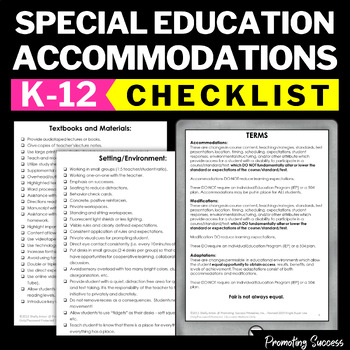Classroom Behavior Management Strategies That Actually Work
Behavior management isn’t about control—it’s about consistency, communication, and support. If you're dealing with students who tantrum, shut down, or disengage during independent work or transitions, you’re not alone. The good news? You can reduce disruptive behaviors with a targeted, proactive approach and the right tools in place.
Before We Begin...
Want a simple, effective way to document behavior and communicate with families?
It’s perfect for IEP teams, 504 planning, or supporting students with behavioral needs.
The Biggest Mistake in Behavior Intervention
Many well-meaning educators try to implement multiple strategies at once. But here’s the problem:
- When you do too much, you won’t know what’s actually working—and the student may feel overwhelmed, leading to even more outbursts.
Instead, target one behavior at a time, especially the most disruptive one. Start small, stay consistent, and track what matters.
Let’s Talk Tantrums (and Other “Crisis Mode” Behavior)
You can’t teach self-regulation while a student is melting down. That's why the most successful behavior strategies happen before the escalation begins.
Here’s how to take a proactive, skill-building approach:
Teach a Coping Script
Simple scripts give students tools to recognize and regulate their behavior. They should be taught before triggers arise, and practiced often through role play and positive reinforcement.
Example: Student with transition tantrums
Script:
- Take a deep breath
- Count to 10
- Say, “I can stop kicking and screaming.”
- Say, “I can hold my teddy bear and walk to the next activity.”
Proactive Environmental Supports
Set up the classroom to support smoother transitions and fewer meltdowns:
- Use a 2-minute timer to prepare students for changes
- Add transition music or sound cues (e.g., drum = math, bell = reading)
- Post a visual picture schedule, even for readers
- Introduce a "now/next" board to reduce uncertainty
What About Students Who “Shut Down”?
Let’s say you have a student who refuses to start independent work. You’ve already confirmed the assignments are at the student’s instructional level—but they still don’t engage.
This is often rooted in anxiety or fear of failure. That’s where teaching help-seeking behaviors comes in.
Script for work avoidance:
- Take a deep breath
- Read the directions
- Say, “I can stop sitting with my head down.”
- Say, “I can try the first question and then raise my HELP card.”
Again, these scripts must be practiced outside of crisis moments and celebrated when used effectively.
Track What Matters with Ready-to-Use Tools
Behavior plans only work if they’re monitored and adjusted. That’s why I created two classroom-tested resources to save you time and support your students:
👉 Click here for Communication & Behavior Sheets
This printable + editable set includes 12 home-school communication forms ideal for:
- Special education, middle, or high school
- Daily reports, progress slips, and parent check-ins
- Behavior tracking, student planners, goal setting, and habit tracking
- Print-and-go OR customize in Canva
Perfect for building consistency and strengthening school-home partnerships.
👉 Click here for Behavior Report Log
Use these daily/weekly tracking forms to:
- Record behavioral goals
- Track frequency, strategies, and observations
- Summarize weekly trends and plan next steps
- Easily plug into IEP reports or RTI meetings
- Includes color + black-and-white versions
Final Thoughts
Behavior challenges can feel overwhelming—but with proactive strategies, clear scripts, and smart documentation, you can transform your classroom into a space where all students feel supported and capable.
Start with one behavior. Teach it. Practice it. Track it. And don’t forget—your consistency is their security.
You’ve got this—and I’m here to support you every step of the way. ❤️
👉 Click here to get the full checklist for IEP & 504 planning.
Used by thousands of teachers from preschool through adult ed, it’s a must-have for your resource library.

.png)





No comments:
Post a Comment
Please leave a comment below. Thank you!